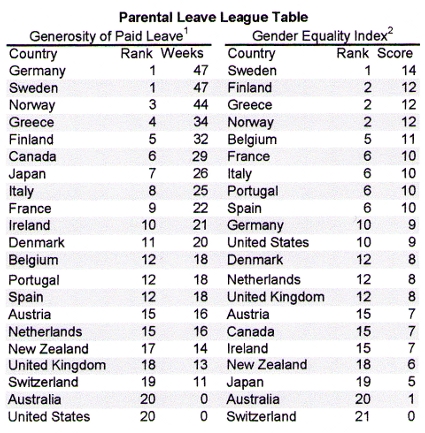My Summary:
The chapter starts of by talking about macro-level variables that have made families go through hard economic times. Some examples are deindustrialization, globalization, and offshoring. This is how the conclusion that social class and economic changes play a major role in what happens to families. The trend that is currently happening is that rich families are getting richer and poorer families are growing even poorer. The way the economy affects families is that they must accept low-wage jobs or work nonstandard hours or only part time. Also even though the official unemployment rates are relatively high in perspective they are not accurate because it does not take into account the millions of discouraged and underemployed workers. This is a bad thing because unemployment leads to poverty. It has been decided by many educated peoples that the poverty line is unrealistic, but they agree that children, women, and many racial-ethnic families are disproportionately poor. There are explanations to this high rate of poverty and homelessness and are still on the rise.
A new trend though is the increasing participation of women in the labor force since the 1950’s, but is now starting to level off. Even though it is starting level off many women are now working longer before having children/ childbirth and return to work more quickly than in the past. The reason being is that economic recessions and stagnant incomes have resulted in more dual-earner families. The differences between these families are in terms of social class, gender roles and parenting, and willingness to relocate or to have a commuter marriage. Women encounter problems though in the workplace when it came to gender pay gaps, a motherhood penalty, and sexual harassment. This is why the next topic that was discussed was the huge inequality and discrimination in the workplace. There is inequality and discrimination based on sex, race, and ethnicity. A solution that was developed was for the gender pay gap is comparable worth, but very few states have enacted such policies. There have been some other changes in the workplace in order to limit the inequality and discrimination within. Some examples are being able to bring babies to work, flextime, and telecommuting. These options are not always available but these options do have benefits and costs. An example of this is the Family and Medical Leave Act. It is supposed to protect an employee’s job during illness and maternity/paternity leave, but many employers still provide only limited coverage. The United States lags significantly behind other countries, no matter whether it is industrialized or developing, in offering paid leaves for workers to care for their children and other dependents. This is the most current leaders for leave in the world.

My Opinions:
I enjoyed the section when talking about how women’s participation in the work force has increased significantly since the 1950’s. Which I know that is when the war was and they needed women to work in order to produce the products needed for the soldiers in Europe. I thought this was a great thing to happen proving that women were not just content working at home and happy to receive household appliances.

I found a lot of images that tried to persuade women to come into the workforce.



As you can see they appealed to the side that women cannot really do the work but since they needed they appealed to their intimidated side saying that they can do the work it is not that hard. Then there is the poster that you can do it that shows that women are strong and can fend for them. Then they want the women to think they have a choice in what jobs they can do, but I noticed that it says war job implying that as soon as the war is over it will return to the men having all the jobs. Then the last image I have tries to prove that women are “bitchy” and whiney and this why unless needed they should not be in the workforce. The advertisers start to say that women cannot truly handle themselves within the labor force.

Questions:
I guess my big questions after all of these feminists’ movements and any other movement about discrimination why is inequality in the workplace still allow to occur? I mean I was hired at my current job right before this boy who was hired a week later than me and he makes twenty five more cents then I do just simply because of his gender.
Also I know it is pretty much necessary for families to be two- income families, but do you think that is also why some marriages fail? I know it has been previously discussed that it could be the children, but I personally think that not being able to see each other and “growing apart” is a huge culprit in this.
No comments:
Post a Comment